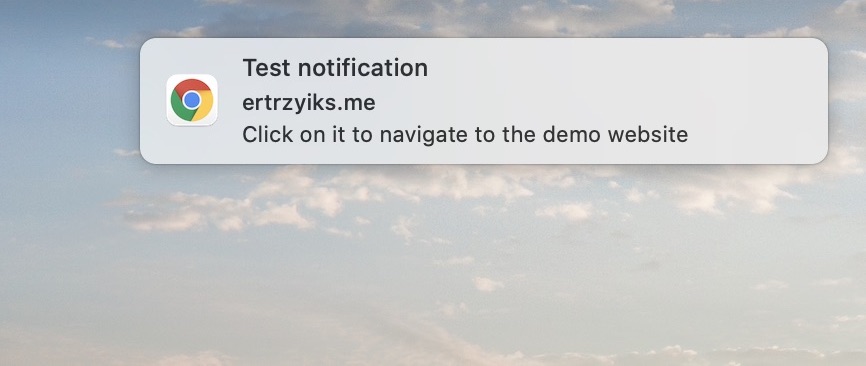
Exploration of web notifications
What I see a lot is a popup asking me to allow notification for a website. If the popup attacks me right after I just opened the page, I have no interest in enabling them without knowing what I actually can expect and intuitively click ‘No’. That way I’ve never received a notification from a website. Are they inevitably bad and should be avoided at any cost? I decided to check it out.
How does it work?

I was wondering how it works though and that curiosity led to creating a simple Push Notification API Demo page.
The source code of the demo page is available on Github: ertrzyiks/web-push-demo
I found out that web push notifications are a combination of three browser APIs.
Service workers
It’s essential in a way that the other two APIs are available only in the Service Worker. The responsibility of the worker is to first set up an event listener for the push messages. It allows background processing so the message can be received even if the user does not actively use the website.
The Service Worker integration can become very overwhelming, especially if it includes network interception and cache management. It requires well thought through update strategy and it’s worth considering some additional library to deal with that complexity, for example Workbox. In case of using a Service Worker purely for notifications we can make some shortcuts to keep it simple. Specifically, we can force activate a new worker version as soon as it’s updated.
self.addEventListener('install', event => {
event.waitUntil(self.skipWaiting())
})The recommended way to activate a new worker is to offer a page refresh, because, at times, instant activation may cause incompatibility problems.
Push API
This experimental API allows us to push a message from a server directly to the browser. However, the message alone does not show a system notification. It only wakes up the worker so it can react to the message and execute some code on the user’s device.
First of all, we need to get a user subscription:
await registration.pushManager.subscribe({
userVisibleOnly: true | false,
applicationServerKey: ...
})This will prompt the user permission dialog and if accepted we get the subscription object which we can then send to the server for further interaction. One option is to use the web-push library on the server-side to send messages to such a subscription.
The next step is to set up a messages handler.
In the worker code, it boils down to configuring a push event listener.
self.addEventListener('push', event => {
let data = {}
if (event.data) {
data = event.data.json()
}
event.waitUntil((async () => {
// ... do some processing here
})())
})This handler will be called every time the worker receives a message for the user subscription. For this research I was purely interested in displaying a system notification and fortunately that is possible with the third API.
Notification
Finally, after receiving a message from the server we can display a system notification. It can be slightly customized, but the general look and feel depends on the operating system.
await self.registration.showNotification(data.title, {
body: data.message,
data: { redirect_url: data.redirect_url }
})Notifications are usually configurable per application, so the user may decide to turn them off for a web browser. In such case, the notification won’t be displayed even if we have user permission and the subscription object.
Summary
The Push API is widely supported and free of charge, but forget about Safari (both Mac and iOS).
Push messages can bring the user back to the website even when they are not using a web browser at that moment.
It’s possible to ask the user to grant notification permissions in some context, for example after a button click. This way they don’t need to be that intrusive.